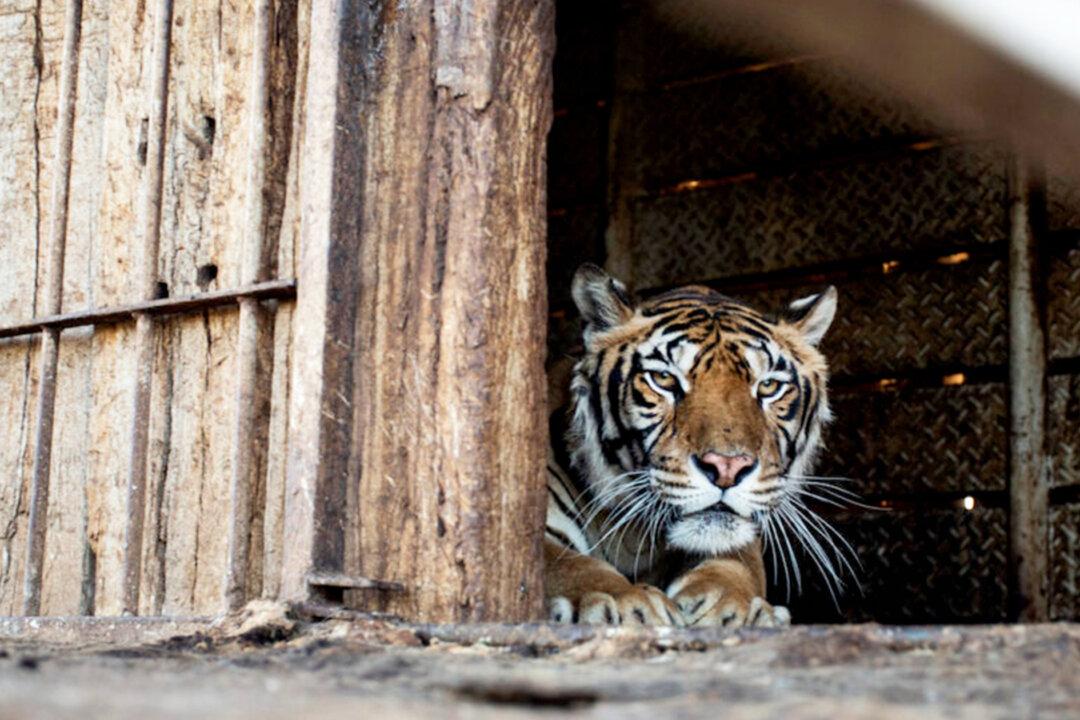After being locked in an abandoned train carriage in Argentina for 15 years, a family of four rescued Bengal tigers has finally seen the sky above and felt the grass beneath their paws.
International animal welfare group Four Paws was told about the captive “train tigers” in northwestern Argentina’s San Luis province in 2021 after authorities discovered their inadequate living conditions.





